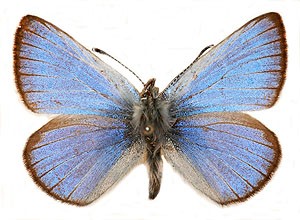 Visit our holdings databases. Historically, the primary geographical emphasis of the Essig Museum has been on western North America and contains probably the largest collection of California insects in existence. From 1939 to 1999 the California Insect Survey (Experiment Station Project 1205) generated a large number of specimens representative of the terrestrial arthropod fauna of the state, and the collection has served as a repository for the research collections of students of systematics at UC Berkeley as well. In addition to California material, the museum houses a large collection of specimens from the northern Neotropics. Extensive fieldwork in Mexico by museum faculty and staff has enabled the assembly of a large, extremely important collection of specimens from that country. Collaborative work with INBio (Instituto Nacional de Biodiversidad) has provided the museum with excellent collections from Costa Rica. Recent research emphasis is being focused on the Pacific Rim and Basin, particularly the Pacific Islands and Chile.
Visit our holdings databases. Historically, the primary geographical emphasis of the Essig Museum has been on western North America and contains probably the largest collection of California insects in existence. From 1939 to 1999 the California Insect Survey (Experiment Station Project 1205) generated a large number of specimens representative of the terrestrial arthropod fauna of the state, and the collection has served as a repository for the research collections of students of systematics at UC Berkeley as well. In addition to California material, the museum houses a large collection of specimens from the northern Neotropics. Extensive fieldwork in Mexico by museum faculty and staff has enabled the assembly of a large, extremely important collection of specimens from that country. Collaborative work with INBio (Instituto Nacional de Biodiversidad) has provided the museum with excellent collections from Costa Rica. Recent research emphasis is being focused on the Pacific Rim and Basin, particularly the Pacific Islands and Chile.
The close association between research and acquisitions has made the Essig Museum unusually rich in biological and ecological data. It is a repository for voucher specimens from numerous studies in biological control, pollination ecology, parasitism, biogeography, genetics, and other disciplines. Many specimens, particularly Lepidoptera, have been reared from immature stages, and are therefore associated with larval host records, preserved larvae and pupal skins, as well as a wealth of phenological data. Locality data associated with specimens is generally very complete. The age of the collection is also an important asset. The Essig Museum’s holdings provide a valuable source of data for documenting changes in California’s fauna through the period of explosive human population growth during the last 70 years.
The collection was housed in approximately 8000 drawers in 400 California Academy-style insect cabinets. The pinned collection has now been moved to our new location in the Valley Life Sciences Building, and has been transferred into a state-of-the-art compacter system. Pinned specimens (over 5 million) make up the majority of the holdings, however, large microscope slide and alcohol-preserved collections are also maintained, as well as thousands of specimens in envelopes and Riker mounts. Nearly 2000 primary types have been designated from the Essig Museum specimens over the years. Approximately 1050 of these are housed at the museum and the remainder are on loan of indefinite duration to the California Academy of Sciences, San Francisco.
The taxonomic strengths of the collection reflect its history and participants. Coleoptera (30%), with particularly large holdings of Cerambycidae (E. Gorton Linsley and John A. Chemsak) and Tenebrionidae (John T. Doyen), has the greatest number of specimens. The Lepidoptera (24%) includes the largest and most diverse collection of microlepidoptera in western North America (Jerry A. Powell). The large Hymenoptera collection (21%) is noteworthy for Apoidea (Paul D. Hurd, John McSwain, Abraham E, Michelbacher, E. Gorton Linsley, Howell V. Daly), Parasitica (Kenneth S. Hagen, Evert I. Schlinger, Robert van den Bosch), and Symphyta (Woodrow W. Middlekauff). Hemiptera (7%) has outstanding collections especially of Cimicidae (Robert L. Usinger), Aradidae, Aphididae (Edward O. Essig, Robert van den Bosch), and Psyllidae (Dilworth D. Jensen). The Diptera (11%), which was curated and contributed to by Frank Cole in his latter years, has substantial collections of Tabanidae (Woodrow W. Middlekauff, Robert Lane), Asilidae, Bombyliidae, and parasitic families (Gordon F. Ferris, John R. Anderson). Holdings of some of the smaller arthropod groups are quite diverse and noteworthy, in particular the collections of Phthiraptera (Vernon L. Kellogg, Gordon F. Ferris), Siphonaptera (Morris A. Stewart), Thysanoptera (H. Edwin Cott), Odonata (Rosser Garrison), Orthoptera: Acrididae (Woodrow W. Middlekauff) and Arachnida, especially Araneae (Evert I. Schlinger, Charles E. Griswold), Acari (A. Earl Pritchard, Deane P. Furman), particularly Ixodida (Deane P. Furman, Robert Lane), and Scorpionida.
The museum has benefited from the acquisition of several large collections from other institutions and non-UC researchers. The Vernon L. Kellogg and Gordon F. Ferris Phthiraptera collections were both acquired from Stanford University in 1961. The H. Edwin Cott Thysanoptera collection was rescued by former collection manager John Chemsak from a garage where it was discovered after Cott’s death. Other large collection acquisitions of note include the entire insect collection of the University of California, Irvine, in 1992, containing approximately 56,000 pinned insects and an additional 31,000 Lepidoptera in riker mounts and envelopes, and in 2003, the historic research collections of UC Hastings Natural History Reservation comprising 7,000 microscope slides and 1,500 vials of specimens, the majority being rodent ectoparasites.
Special Collections
- H. Edwin Cott Thysanoptera Collection
- Edward O. Essig Aphididae Collection
- Gordon F. Ferris Anoplura (Phthiraptera) and Ectoparasitic Diptera Collections
- Deane P. Furman Parasitic Acari Collection
- Dilworth D. Jensen Psyllidae Collection
- Vernon L. Kellogg Mallophaga (Phthiraptera) Collection
- Robert S. Lane Tabanidae and Ixodida Collection
- Jerry A. Powell Lepidoptera Collection
- A. Earl Pritchard Acari Collection
- Evert I. Schlinger Aphid Parasitoid Collection
- Morris A. Stewart Siphonaptera Collection
- Robert L. Usinger Heteroptera Collection
- Hastings Natural History Reservation Collections
